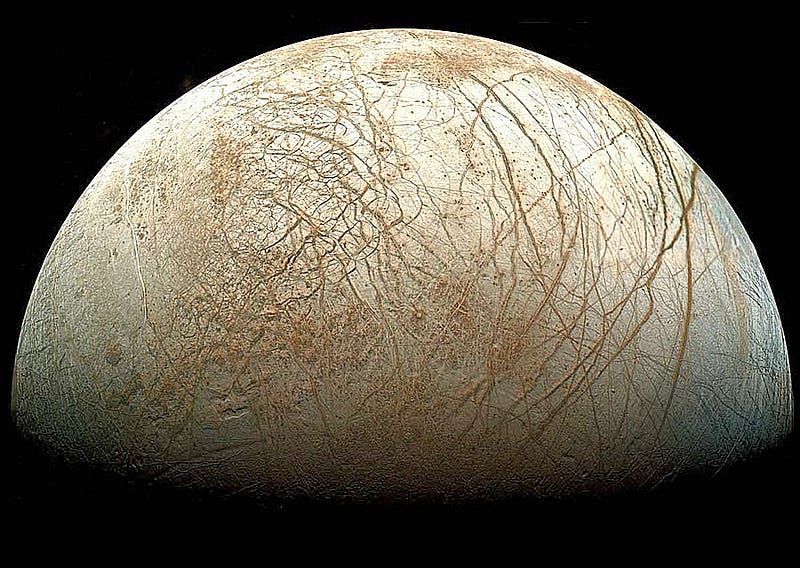Exploring Europa: NASA's Mission to Find Alien Life
Written on
Chapter 1: Introduction to Europa
NASA is embarking on an exciting journey to Europa, one of Jupiter's moons, in pursuit of potential extraterrestrial life. This fourth-largest moon has emerged as a prime candidate for exploration due to previous research indicating the presence of a subsurface ocean beneath its icy exterior. The agency has set in motion plans to launch the Europa Clipper mission, with the spacecraft expected to launch as early as 2023. This sophisticated orbiter is designed to withstand intense radiation in its quest to detect signs of life hidden beneath Europa's icy shell.
The moon Europa was discovered by Galileo Galilei between 1609 and 1610, alongside three other significant moons: Io, Ganymede, and Callisto. Ground-based telescopes and data from missions such as Voyager, Galileo, and Cassini have provided compelling evidence of liquid water existing beneath Europa's frozen crust. Scientists estimate that this icy layer is approximately 10 to 15 miles (15 to 25 kilometers) thick, floating atop an ocean that could be between 40 to 100 miles (60 to 150 kilometers) deep. Although Europa is only a quarter the size of Earth and possesses 65% of the mass of Earth's moon, its vast oceans present a promising opportunity to discover life beyond our planet.
To further investigate, a spacecraft can detect the presence of liquid water by observing possible plumes that may be venting into the atmosphere. Notably, the Hubble Space Telescope identified such plumes rising about 100 miles (160 kilometers) above Europa's South Pole in 2012.

Chapter 2: The Europa Clipper Mission
The development of the Europa Clipper is taking place at NASA’s Jet Propulsion Laboratory in Pasadena, California, in collaboration with the Johns Hopkins University Applied Physics Laboratory. This ambitious $2 billion endeavor will carry nine scientific instruments designed to gather a variety of data, and it is expected to take approximately six years to reach its destination.
Among the advanced equipment onboard will be:
- Cameras and Spectrometers: These will capture high-resolution images of Europa's surface and analyze its geological features.
- Ice-Penetrating Radar: This tool will help determine the thickness of the ice layer while searching for subsurface lakes.
- Magnetometer: This instrument will measure the strength and direction of Europa’s magnetic field, aiding in confirming the existence of the subsurface ocean and assessing its depth and salinity.
- Thermal Instruments: These will scan the moon's surface for evidence of recent warm water eruptions, while additional tools will analyze water and tiny particles in the moon's tenuous atmosphere.
As the Clipper performs 45 flybys at varying altitudes between 16 and 1,700 miles (25 to 2,700 km) and spends around 2.3 years in orbit, it will gather invaluable data about this enigmatic moon. Following this mission, NASA has plans for another ambitious project targeting Saturn's largest moon, Titan, which features a dense atmosphere and liquid methane bodies. The Dragonfly helicopter drone is set to be launched in 2026, aiming to reach Titan by 2034.
This video discusses NASA's Europa Clipper mission and its objectives in the search for alien life beneath the icy surface of Europa.
This video outlines the next steps for the Europa Clipper mission as of September 2024, detailing the timeline and scientific goals.